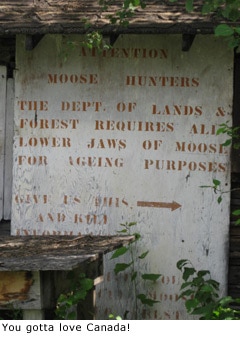 Tim O’Brien, one of my favorite authors, published a marvelous book several years ago titled Into the Lake of the Woods. It is, in many ways, a mystery, one that frustrates a lot of readers because at the end, the protagonist heads off into the labyrinthine archipelago of Lake of the Woods and is never seen again.
Tim O’Brien, one of my favorite authors, published a marvelous book several years ago titled Into the Lake of the Woods. It is, in many ways, a mystery, one that frustrates a lot of readers because at the end, the protagonist heads off into the labyrinthine archipelago of Lake of the Woods and is never seen again.
When you experience this lake, the 14th largest freshwater lake in the world, with its 14,000 islands, you can see clearly how easy it would be to lose your way. These days, most boats are outfitted with GPS that tell you not only where you are but also where the reefs and hidden rocks lie. But in the old days, I’ve been told, it wasn’t at all uncommon to have to organize a search for a boat full of fishermen who’d gone off without a guide.
Our second day on the Angle, one of the guides for the Angle Inn Lodge, a terrific guy named Tony Ebnet, offered to squire us around Lake of the Woods. We leaped at the offer. Tony’s been coming to Oak Island for a lot of years, and has been guiding for the folks at Angle Inn Lodge for the last five. He knows the lake pretty well and has a great repertoire of stories.
We headed off about nine in the morning, on a day that we were told was unusually calm. The lake water surprised me. It wasn’t crystal clear, as are so many of the lakes I know in the Arrowhead region. It was the color of strong tea. Tony told us this is from the algae that grows naturally in the lake, a phenomenon noted by the voyageurs over 200 years ago. In Tony’s comfortable launch, we zipped first to Cyclone Island where there’s an unmanned custom station, and we checked in with Canadian officials. Then we began a full day on the lake.
 We visited Massacre Island, and Tony told us the grisly story behind its well-earned moniker. We cut up narrow passages between islands, veered into picturesque inlets, motored along steep cliff faces, and hit the broad and unusually smooth water of some huge bays.
We visited Massacre Island, and Tony told us the grisly story behind its well-earned moniker. We cut up narrow passages between islands, veered into picturesque inlets, motored along steep cliff faces, and hit the broad and unusually smooth water of some huge bays.
Around noon we stopped for lunch at Wiley Point Lodge, a remarkably modern enclave deep in the remote wilderness. Finally we headed south, back toward the Angle. Along the way, we visited Windigo Island, which is home to the Reserve 37 First Nations band of Ojibwe. Our final stop was at Ft. Saint Charles, a reconstruction of the important fur trading center built in the early 1700’s.
I snapped photos like crazy and scribbled madly in the notebook I’d brought. That day on the lake didn’t make me an expert, but it gave me an invaluable sense of the place where my next novel would be set. By the time we returned to Angle Inn Lodge, Diane and I were sunburned, exhausted, and at the same time exhilarated.
I’ve talked with authors who use the Internet to research the locations for their novels. I’m always more than a little skeptical about the quality of the job they do when creating a story’s sense of place. Me, I have to go there. And I’m always glad I did.
